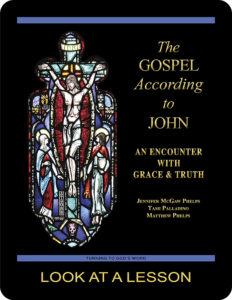metamorphosis
T he reading from the Gospel According to Matthew 17:1–9 (NABRE) details
he reading from the Gospel According to Matthew 17:1–9 (NABRE) details
the appearance of Moses and Elijah along with Jesus on the mountain, and describes the transfiguration of Jesus. The liturgical feast celebrating this event goes by its Latin name, Transfiguration. The Latin word figura means “form” or “appearance.” The prefix trans- means “across,” and so as part of a compound word trans- typically indicates change.
To provide a fuller perspective on the concept, it’s interesting to compare this to the Greek word that essentially carries the same meaning, μεταμόρφωσις (metamorphosis). This word is fairly obviously the root of the English metamorphosis. Perhaps because we’ve used the Latin phrase for Christian purposes and the Greek for more secular purposes, this contrast creates an interesting view of this event and may allow us to look at it with fresh eyes.
How does thinking of this event as Jesus’ metamorphosis change your view of what happened?
related topic: transfiguration & transubstantiation
you also may like our study of the Gospel According to John
 The Gospel According to John: An Encounter with Grace & Truth, a 25-lesson Catholic Bible study with an imprimatur, examines the Fourth Gospel’s view of Jesus Christ as the Son of God, with special emphasis on the institution of the sacraments of the Church as the means by which Christians are purified and made holy. This recently revised study includes maps and additional commentary, and takes a closer look at the way in which Jesus relates to individual men and women. Click on the book’s cover to view a sample lesson.
The Gospel According to John: An Encounter with Grace & Truth, a 25-lesson Catholic Bible study with an imprimatur, examines the Fourth Gospel’s view of Jesus Christ as the Son of God, with special emphasis on the institution of the sacraments of the Church as the means by which Christians are purified and made holy. This recently revised study includes maps and additional commentary, and takes a closer look at the way in which Jesus relates to individual men and women. Click on the book’s cover to view a sample lesson.
 Click on the picture of the statue of Moses with horns (above) to learn more about Lost in Translation. A new entry is archived each Monday. Contact us to receive Lost in Translation by email every week. You may use any of the contact links on our website to ask Matthew a question.
Click on the picture of the statue of Moses with horns (above) to learn more about Lost in Translation. A new entry is archived each Monday. Contact us to receive Lost in Translation by email every week. You may use any of the contact links on our website to ask Matthew a question.
